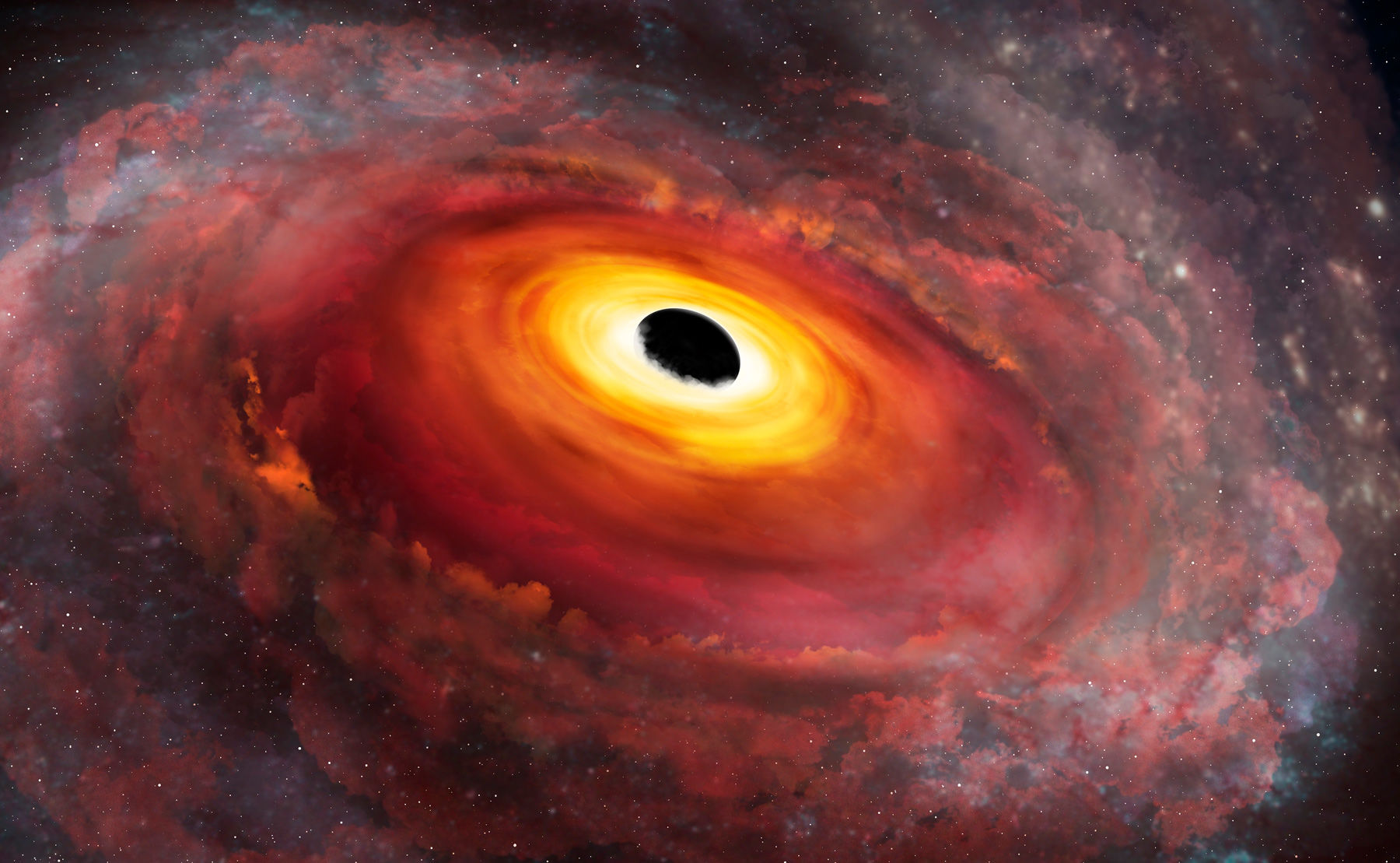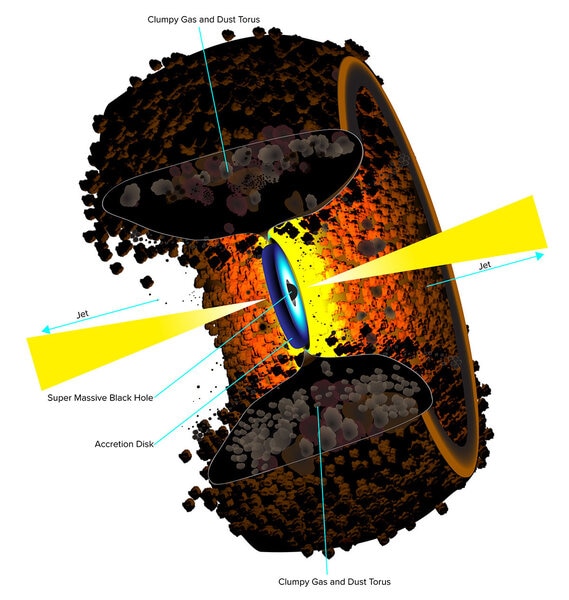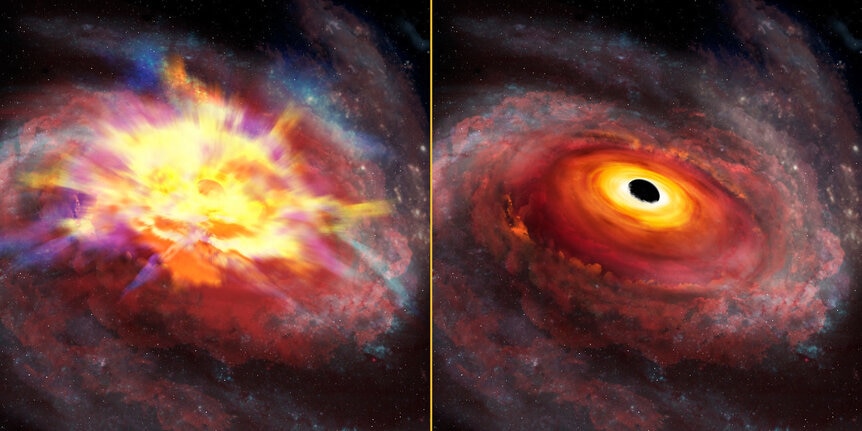Create a free profile to get unlimited access to exclusive videos, sweepstakes, and more!
A distant quasar has the most powerful wind ever seen. And yeah, it's a doozy.

As I've said many times, I don't generally write about record-breaking astronomical events because they’re usually fairly incremental, which means there'll be another record breaker found soon.
And then sometimes a record breaker comes along that vaporizes my brain. Let’s talk about SDSS J135246.37+423923.5.
That alphanumeric character salad is a quasar, a special kind of galaxy that in this case is very far away from us: The light from it has been traveling nearly 11 billion years to reach Earth, so it's nearly all the way across the observable Universe. We're also seeing it as it was when it was very young; the Universe itself is only a few billion years older.
I've written about quasars many times, so I'll let myself do the explaining here:
[Quasars] are a kind of galaxy that blast out huge amounts of light due to a supermassive black hole in their centers. Every big galaxy has one, we think, including the Milky Way, but most are quiet. However, if some situation or event sends lots of gas sleeting into the black hole, it will pile up into a swirling disk just above The Point of No Return. Friction in the disk will heat it hugely, with the material getting heated to millions of degrees. Gas this hot glows fiercely, making quasars some of the most continuously luminous sources of energy in the entire Universe.
They were more common in the early Universe; material left over from the galaxy's formation can fall to the center where the supermassive black hole awaits.
The huge amount of energy blasting outward from such a beast can make them intensely bright, and it also can drive matter away from the quasar’s center, creating a vast wind of stuff blowing outward. Sometimes at high speeds. Sometimes at very high speeds.
And sometimes it’s a lot of material moving at ridiculously high speeds. Which brings me back to SDSS J135246.37+423923.5.
In general, when we measure the wind speeds and amount of material flowing out of a quasar, it’s either a lot of stuff flowing slowly, or a little bit of stuff moving rapidly. But with SDSS J135246.37+423923.5 that ain’t the case: It's blowing a lot of stuff away very rapidly. Like holy crap amounts at holy crap speeds: Every year, over 3000 times the mass of the Sun worth of gas is blown out at speeds of 140 million kilometers per hour. That's 13% the speed of light.
That's … staggering. A star like the Sun is a colossal thing, over a million kilometers wide with hundreds of thousands of times the mass of the Earth. Yet this quasar is blasting away nearly ten times that mass every day at tens of thousands of kilometers per second.
This is the most powerful wind from a quasar ever measured. That's the record breaker.
As I read that in the journal paper and my brain started sloshing around in my skull, my first thought (beside incoherent screaming) was how big is that black hole? And how much material is falling into it to power such a monstrous outflow?
Happily, the paper gives these numbers: The black hole has 8.6 billion times the mass of the Sun, and the amount of gas falling into it each year is about 175 times the mass of the Sun.
I may have blacked out for a moment when I read that. Either one of those figures is incredible. That's a big black hole; the one in the center of our Milky Way is only a little over 4 million Suns worth of mass; this black hole is 2000 times more massive. That makes it among the biggest known.
And that amount of material falling in is beyond terrifying. Think of it this way: That’s the equivalent of eating 160,000 Earths every day. Every. Day.
That’s what’s powering this black hole. As that material falls in, it accelerates to high speeds due to the black hole’s gravity. As it piles up around the black hole in the disk, that energy of motion is converted in energy of light and heat, and, well, that much material moving that fast adds up to a vast amount of energy. That’s how it can blast so much matter outward at such high speeds.
And yet, remarkably, this quasar is hard to see! That’s because there’s so much material in the galaxy’s core that it completely obscures what’s going on in visible light. The huge power of this monster wasn’t appreciated until it was observed using the Gemini North telescope, an 8.1-meter behemoth that can observe in infrared light. Visible light can't make it through all that junk in the quasar, but infrared light can, so by observing at that wavelength we can see the material closer in to the black hole (like firefighters using IR cameras to be able to see inside a smoke-filled room) and measure its true power.
And that raises an interesting question indeed: How many more of this kind of incredibly luminous but obscured quasar are out there? They may look like ordinary quasars but are hiding extraordinary power, and there might be a lot more just waiting to be uncovered.
We've known about quasars since the 1960s, but they are still capable of surprises, especially deeply hidden ones. Our Universe is a pretty amazing place, and sometimes we have to dig a bit to see just how much.
















